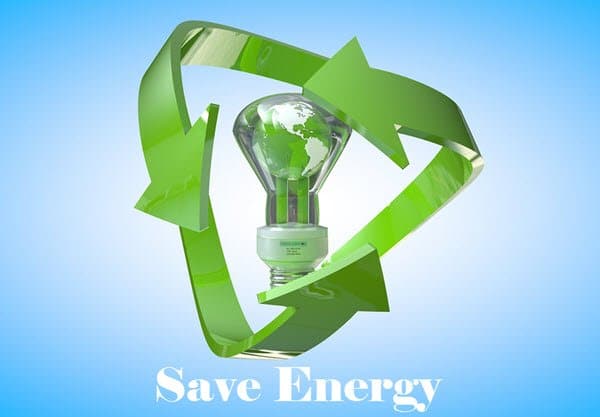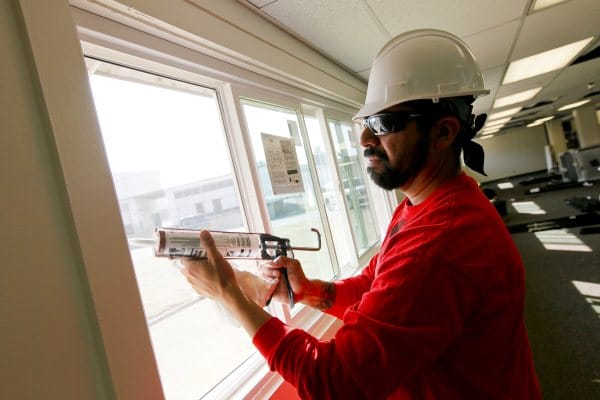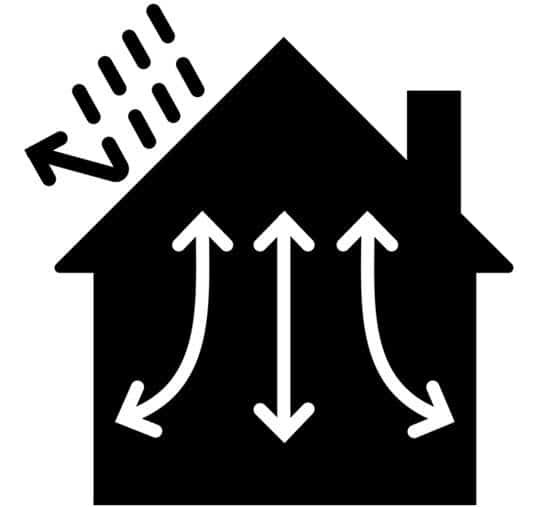We, humans, are inevitably dependent on Energy consumption for leading our lives.
We require and use Energy in various forms such as electricity, oil, gas, coal, wood, wind, solar and nuclear energy and other forms of energy as well.
Our lives revolve around the use of Energy.
However, it is seen that there is unnecessary wastage of these vital and precious resources.
Another truth is that some of these Energy sources such as oil, coal, gas, wood are natural and are fast getting depleted.
So, it becomes of prime importance to use the Energy resources a little more intelligently.
Today, we have come up with a presentation in which we show you 10 Best Ways to Save Energy at Home.
As the research statistics reveal, The World Energy Consumption is on the rise.
The past decade has witnessed a marked increase in the world energy consumption levels.
This means that on an average per person energy usage has increased.
Another aspect of this energy consumption is that every passing hour witnesses much energy being wasted uselessly.
And it will not be an overstatement to say that we can easily save this Energy from getting wasted.
One thing is very clear, and that is Energy is precious, and it takes a lot of resources to make them functional.

Contents
Why should we save Energy?
The answer to this vital question has two interconnected parts.
One part deals with the fact that Energy Saved is equivalent to Energy produced.
In this part, we put forward various ways by which we can easily save quite a big amount spend on Energy.
And the second part focuses on the financial aspect of Energy Saving.
As you save on energy usage or rather avoid energy wastage, you simultaneously save on the monthly expenditures that you are doing on the overall Energy consumed by you.
Here we will discuss both of these aspects linked to why we should save energy.
If we look at our lives, it would not be difficult for us to discover the areas where we can easily save energy.
Though the level of Energy usage varies from person to person and there is nothing wrong in it, but certainly one must inculcate habits related to avoiding energy wastage.
We should make it a point to switch off the lights, fans and ACs and any other electrical appliances when we leave our room or go out of our houses.
We can even try to use energy efficient electrical and electronics equipment.
Driving at optimum speeds and shutting down our two and four wheelers at traffic signals is also one of the healthy Energy saving habits. Keeping our vehicles in good condition also helps to save a good amount of fuel.
You can even find new and unique ways to avoid wasting up on energy.
Doing all these little things can save on our Energy consumption by almost 25% per month. And if we count this on a global level this amounts to a huge value of Energy.
Secondly, it is clear that if we are successful in saving the energy usage or controlling the wasting of energy, we can automatically reduce our unnecessary expenses that we make a month on month.
The money saved here can be used for other purposes or simply can be saved for some upcoming event such as buying of gadgets, for a holiday vacation with your family, buying apparels, etc.
As an example, suppose your monthly expenditure on overall Energy Consumption comes to say $500.00. By following certain energy saving tips, let’s say you are able to save $50.00 per month.
On a yearly basis, this amounts to $600.00 which is good enough to get you the latest iPhone.
So, it is really nice and fruitful to Save Energy.
Thus we see that saving Energy is the need of the hour.
Whatever energy we save can be used and distributed to other people who are facing a shortage of Energy supply.
The Saved Energy can be used in a variety of other ways too. By saving on energy consumption, we also save the wastage of our financial resources.
So, we should try to find out ways in which we can Save Energy.
Each individual effort will make a difference.
A start is needed in this direction.
So, by Saving Energy we are in a way creating a better tomorrow for ourselves.
How to Save Energy at Home?
There are some different ways for reducing your household’s energy use. You can adopt simple behavioral adjustments and employ extensive home improvements.
By conserving energy, you can save on utility bills and can also protect the environment as well.
Here, we list out 10 easy ways to save energy at home.
In fact, saving energy is easy.
It only demands your attention and willingness for energy saving.
These are the 10 best ways to save energy at home.
So, let’s check them out.
10 Ways to Save Energy at Home
1. Improve Your Day-To-Day Behaviors
By improving your day-to-day behaviors, you can easily reduce energy consumption in your home. So, it’s not necessary to go out and purchase energy-efficient products.
It can begin by turning off lights or appliances when you do not need them.
Plus, you can perform household tasks manually instead of using energy-intensive appliances.
For example, you can wash dishes by hand.
You can hand-dry your clothes instead of putting them in the dryer.
The other behavioral adjustments include turning down the heat on your thermostat in the winter. It can also include using your air conditioner less in the summer.
In fact, you should not let go any opportunity of reducing the intensity and frequency of heating and cooling in your home.
This way you can get the greatest savings.
2. Replacing your Light Bulbs
Traditional incandescent light bulbs go on to consume an excessive amount of energy than their energy efficient counterparts.
Plus, they need to be replaced more often than their energy efficient alternatives.
Use of Halogen incandescent bulbs, light-emitting diode bulbs (LEDs), and compact fluorescent lights (CFLs) are a good alternative to traditional bulbs.
They consume anywhere from 25 to 80% less electricity and last three to 25 times longer when compared to traditional bulbs.
Although the energy efficient bulbs are more expensive than traditional bulbs, however, their efficient energy consumption and longer service mean that they prove much more cost effective than traditional bulbs in the long run.
So, energy efficient bulbs are clear winners when viewed from a financial perspective and also regarding environmental benefits.
3. Using Smart Power Strips
Well, it’s an established fact that electricity used by household electronics appliances when they are in a standby mode is a major source of energy waste.
It’s termed as “Phantom loads.”
In fact, as much as 75% of the energy used for powering household electronics appliances is consumed when they are in a standby mode. This can cost you almost $200 per year.
Use of smart power strips goes on to eliminate the problem of phantom loads as they shut off the power to electronics appliances when they are not in use.
You can set smart power strips to turn off at an assigned time through remote switches during a period of inactivity.
4. Installing A Programmable Thermostat
A programmable thermostat can be used to automatically turn off or reduce heating and cooling when you are asleep or away.
By using a programmable thermostat, you don’t have to upgrade your HVAC system or sacrifice any comfort, and still eliminate any wasteful energy use arising from heating and cooling.
In fact, by using a programmable thermostat, you can save on an average $180 per year.
Programmable thermostats are available in different models and can be set to fit your weekly schedule.
Programmable thermostats also include indicators that show you when to replace air filters or HVAC system problems. So, you can improve the efficiency of your heating and cooling system.
5. Purchasing Energy Efficient Appliances
Well, appliances account for almost 13 percent of your total household energy use.
So, when you go on and purchase an appliance pay attention to two numbers: the initial purchase price and the annual operating cost.
Although, you may find that the initial purchase price of an energy efficient appliance is usually high, however, their operating costs are lower by 9% to 25% than the conventional models.
Here’s advice for you.
You should purchase an energy efficient appliance with the ENERGY STAR label. It’s a federal guarantee that the appliance will consume less energy during use and also in standby mode than standard non-energy efficient models.
That said, energy savings vary depending on the specific appliance.
For instance, ENERGY STAR certified clothes washers consume 25 percent less energy than conventional ones, whereas ENERGY STAR rated refrigerators use 9 percent less energy than conventional models.
6. Reducing your Water Heating Expenses
Water heating is one of the major contributors to your total energy consumption.
So, you need an energy efficient water heater to reduce your energy consumption.
They can be 8% to 300% more energy efficient than conventional storage water heaters.
Other than this, you can simply use less hot water, insulate your water heater, or turn down the thermostat on your water heater to save energy consumption.
7. Installing Energy Efficient Windows
Windows can contribute to a large amount of energy waste. In fact, it can amount up to 25% of your total heating bill.
For preventing heat-loss through windows, you should replace single-pane windows with double-pane ones.
If you are living in cold regions, then you should use gas-filled windows with “low-e” coatings. It can help reduce your heating expenses.
Plus, interior or exterior storm windows can also reduce unnecessary heat loss by up to 20 percent. Storm windows are especially useful in case of extreme weather events.
In warm regions, heat gain through windows can be a major problem. Low e-coating on windows can reduce heat gain as they reflect more light and lower the amount of thermal energy that is diffused into your home.
Moreover, the use of ENERGY STAR windows can help you save up to $95 each year on your utility bills.
Plus, the use of window shades, shutters, awnings, screens can offer an extra layer of insulation between your home and external temperature conditions.

8. Upgrading your HVAC System
An HVAC system consists of heating, air conditioning, and ventilation equipment.
In fact, heating alone accounts for more than 40% of home energy use.
You can upgrade to a “U.S. South” ENERGY STAR certification and save almost 12% on your heating bill that is up to $36 per year.
ENERGY STAR furnaces in the northern part of U.S.A. come with the standard ENERGY STAR logo and are up to 16% more energy efficient than baseline models.
They can net you an average savings of $94 per year on your heating expenses in the Northern U.S.A.
However, air conditioning is not a significant contributor to energy bills. It only constitutes about six percent of the total energy use of your home.
That said, you can upgrade to ENERGY STAR central air conditioning units that are eight percent more energy efficient than conventional models.
Upgrading the third component of the HVAC system – ventilation – can also help to lower energy consumption.
A ventilation system consists of ducts that distribute the hot and cold air throughout the home.
These ducts should be properly sealed or insulated to avoid energy wastage. With proper insulation and maintenance of your ventilation system, you can reduce your cooling and heating expenses by almost 20%.
9. Weatherization of Your Home
By weatherizing or sealing air leaks around your home, you can reduce your heating and cooling expenses.
Mostly the air leaks into your home are through vents, windows, and doors.
For preventing such leaks, you should make sure that there no cracks or openings between the wall and vent, doorframe, or window.
An easy way for sealing air leaks between a wall and window frame is to apply caulk.
For sealing cracks between moving objects like operable window and doors, you can use weather stripping.
For deriving maximum savings from weatherization, you should fully insulate your home. Weatherizing techniques offer a return on investment in less than a year.

10. Insulating your Home
Insulation helps to retain heat during the winter and keeps heat out of your home in summer. The “R-Value” or recommended heat resistance level depends on where you live.
For example, the recommended R-Value in warmer climates is much lower than it is for buildings that are located in colder regions.
The five main areas of your house where you should consider adding insulation include the walls, floors, attic, basement, and crawlspace.
Final Words
So, these are the 10 Best Ways to Save Energy at Home.
The important thing for you is to realize that energy saving is a must for you.
It is then you embark on waves for saving energy. It is beneficial from a financial perspective as well as for the environment.
We hope that these energy saving tips prove immensely useful to you.
Please share the post with your friends and colleagues. We welcome your comments and suggestions.







